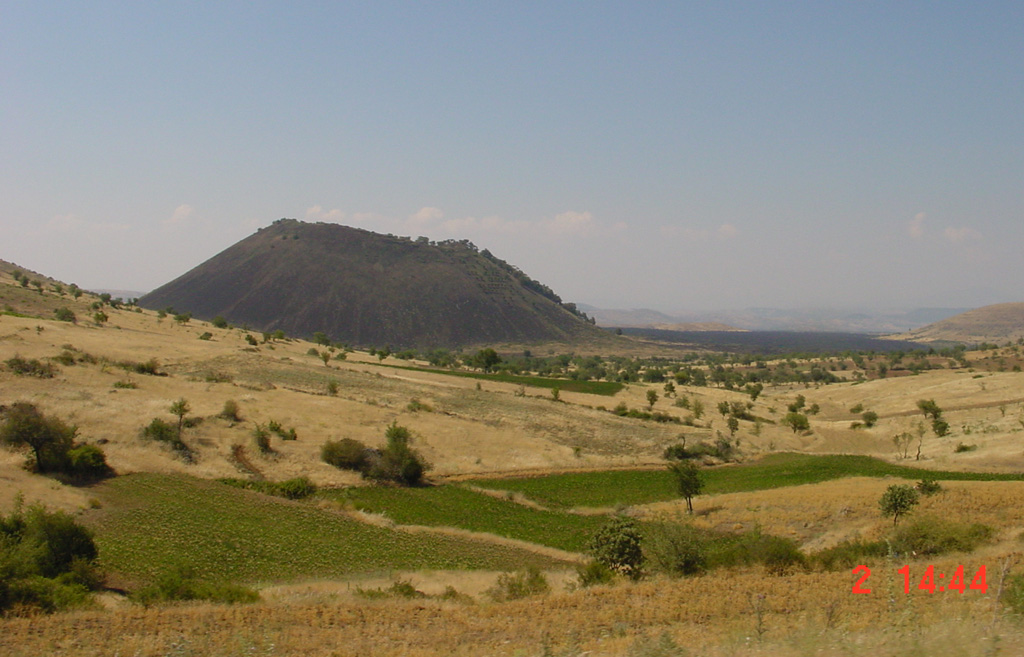Global Volcanism Program | Image GVP-11457

The Kara Divlit Tepe ("Black Ink Cone") scoria cone is part of the Kula volcanic field, the westernmost area of young volcanism in Turkey. It is the youngest of the broad Quaternary volcanic field, which is mostly Pleistocene in age. The 300-m-high cone produced a voluminous lava flow (visible to the N, right of the cone) that traveled 22 km NW and is one of the two youngest flows at Kula. The Kula volcanic field contains a group of cones and maars erupted along a roughly E-W-trending line.
Photo by Samuele Agostini, 2000 (CNR, Pisa, Italy).
![]() This image is made available under the Creative Commons BY-NC-ND 4.0 license terms.
This image is made available under the Creative Commons BY-NC-ND 4.0 license terms.
Keywords: scoria cone

Kula
